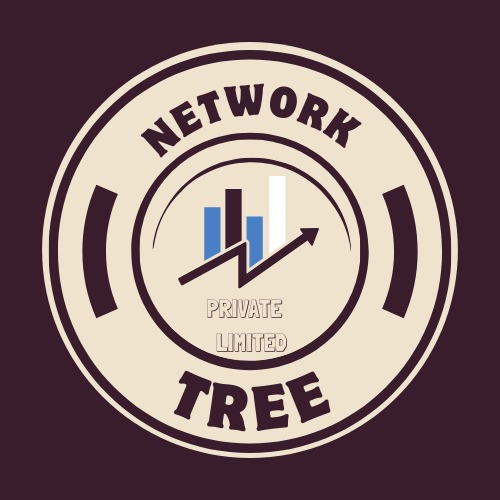Human Resources
1. HR Structure and Policies at NetworkTree.in
A well-defined HR structure helps in managing employees effectively. In an outsourcing company like NetworkTree.in, HR typically consists of different departments, such as:
1.1 HR Functions and Roles
- Recruitment and Talent Acquisition – Responsible for hiring skilled professionals.
- Employee Relations – Manages employee engagement, grievances, and workplace culture.
- Training and Development – Provides training programs and skill development initiatives.
- Compensation and Benefits – Ensures employees receive competitive salaries and perks.
- Compliance and Legal Affairs – Ensures the company follows labor laws and regulations.
1.2 HR Policies
Some common HR policies at NetworkTree.in may include:
- Equal Employment Opportunity (EEO) Policy – Ensures fair hiring and workplace diversity.
- Code of Conduct – Outlines professional behavior and ethics.
- Work-from-Home and Hybrid Policies – Provides flexibility in work arrangements.
- Performance Management System – Regular evaluations and feedback mechanisms.
- Employee Benefits and Perks – Health insurance, paid leave, and incentive programs.
2. Recruitment and Talent Acquisition
Recruitment is a key function of HR at NetworkTree.in, given the need for skilled professionals in outsourcing.
2.1 Sourcing Talent
HR at NetworkTree.in uses multiple sources for hiring:
- Job Portals (LinkedIn, Naukri, Indeed) to post job vacancies.
- Campus Recruitment to hire fresh talent from universities.
- Employee Referrals as a cost-effective hiring method.
- Headhunting Agencies to find niche talent.
2.2 The Hiring Process
The hiring process at NetworkTree.in involves:
- Screening Applications – Filtering resumes based on skills and experience.
- Interviews – Conducting multiple rounds, including technical, HR, and managerial interviews.
- Skill Assessment – Testing candidates on required technical and soft skills.
- Offer and Onboarding – Providing offer letters, documentation, and induction training.
2.3 Challenges in Recruitment
- High Attrition Rates – Employees in the outsourcing sector often switch jobs frequently.
- Skill Shortages – Finding employees with the right mix of technical and communication skills.
- Competition for Talent – Competing with other outsourcing firms for top talent.
3. Employee Engagement and Retention
Employee engagement plays a vital role in keeping employees satisfied and motivated at work. NetworkTree.in implements several initiatives to ensure employee retention.
3.1 Employee Engagement Strategies
- Regular Feedback Mechanisms – Conducting surveys and 1-on-1 meetings.
- Work-Life Balance Initiatives – Flexible work schedules and remote work options.
- Employee Recognition Programs – Monthly awards, bonuses, and promotions.
- Team-Building Activities – Social events, retreats, and wellness programs.
3.2 Retention Strategies
- Career Growth Opportunities – Providing promotions and internal job rotations.
- Competitive Compensation – Offering market-competitive salaries and incentives.
- Inclusive Work Culture – Ensuring diversity, equity, and inclusion.
- Mental Health Support – Offering counseling services and mental wellness initiatives.
3.3 Challenges in Retention
- Monotony in Work – Repetitive tasks may lead to employee burnout.
- Salary Competition – Other firms offering higher salaries attract employees.
- Lack of Career Growth – Employees leave if they don’t see advancement opportunities.
4. Training and Development
Continuous learning and upskilling are crucial in the outsourcing sector. NetworkTree.in invests in employee training programs to keep its workforce competitive.
4.1 Types of Training Programs
- Technical Training – Enhancing job-specific skills.
- Soft Skills Training – Improving communication, leadership, and teamwork.
- Compliance Training – Educating employees about company policies and legal requirements.
- Leadership Development – Preparing employees for managerial roles.
4.2 Training Methods
- Online Learning Platforms – Providing access to Coursera, Udemy, etc.
- Workshops and Seminars – Inviting industry experts for knowledge sharing.
- On-the-Job Training – Hands-on experience through mentorship programs.
- Certifications – Encouraging employees to obtain industry-recognized certifications.
4.3 Benefits of Training
- Improves Employee Productivity – Skilled employees perform better.
- Increases Job Satisfaction – Employees feel valued when learning new skills.
- Enhances Employer Branding – A strong learning culture attracts talent.
5. Compliance and Legal Framework
Ensuring legal compliance is one of the key responsibilities of the HR department at NetworkTree.in.
5.1 Key Employment Laws Followed
- The Shops and Establishments Act – Governs employee work conditions.
- The Minimum Wages Act – Ensures fair compensation for employees.
- The Employees’ Provident Fund (EPF) Act – Mandates retirement savings.
- The Payment of Bonus Act – Ensures performance-based bonuses.
- The Maternity Benefit Act – Provides maternity leave benefits.
5.2 Role of HR in Compliance
- Monitoring Labor Laws – Keeping track of new employment regulations.
- Employee Contracts – Drafting legally compliant offer letters.
- Dispute Resolution – Handling workplace conflicts professionally.
- Diversity and Inclusion Compliance – Ensuring non-discriminatory policies.
5.3 Challenges in Compliance
- Frequent Changes in Labor Laws – Staying updated on new regulations.
- Data Security and Privacy – Protecting employee information.
- Remote Work Compliance – Managing work-from-home regulations.
6. Performance Management System
A robust Performance Management System (PMS) ensures that employees at NetworkTree.in meet organizational goals.
6.1 Key Performance Metrics
- Key Performance Indicators (KPIs) – Measurable goals for job performance.
- 360-Degree Feedback – Feedback from peers, managers, and subordinates.
- Monthly and Annual Reviews – Performance appraisals and salary revisions.
- Performance Incentives – Bonuses and promotions for high performers.
6.2 Common Performance Appraisal Methods
- Self-Assessment – Employees review their performance.
- Managerial Assessment – Supervisors provide performance feedback.
- Peer Review – Colleagues provide feedback on teamwork and collaboration.
6.3 Challenges in Performance Management
- Bias in Reviews – Subjectivity in appraisals can demotivate employees.
- Lack of Clarity in Goals – Unclear expectations affect performance.
- Infrequent Feedback – Employees need regular feedback for improvement.
7. Workplace Culture and Diversity
Creating a positive and inclusive workplace culture is essential for employee satisfaction.
7.1 Steps Taken for an Inclusive Culture
- Gender Diversity Initiatives – Encouraging equal opportunities for all.
- Employee Resource Groups (ERGs) – Supporting underrepresented employees.
- Zero-Tolerance Policies – Addressing workplace discrimination and harassment.
7.2 Benefits of a Positive Work Culture
- Boosts Employee Morale – Happy employees are more productive.
- Encourages Collaboration – Employees work better in an inclusive environment.
- Attracts Top Talent – A great culture improves employer branding.

